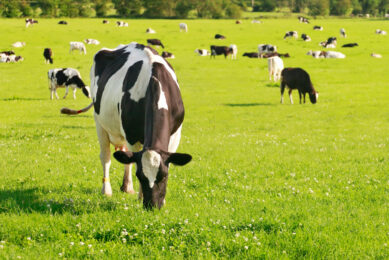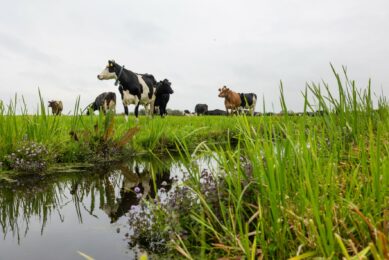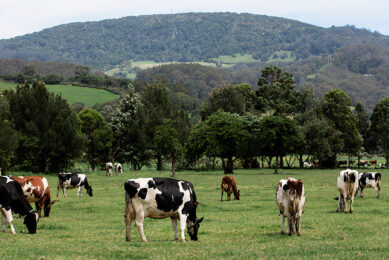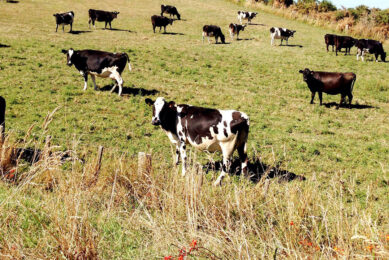Longer grazing steps up acidosis risk
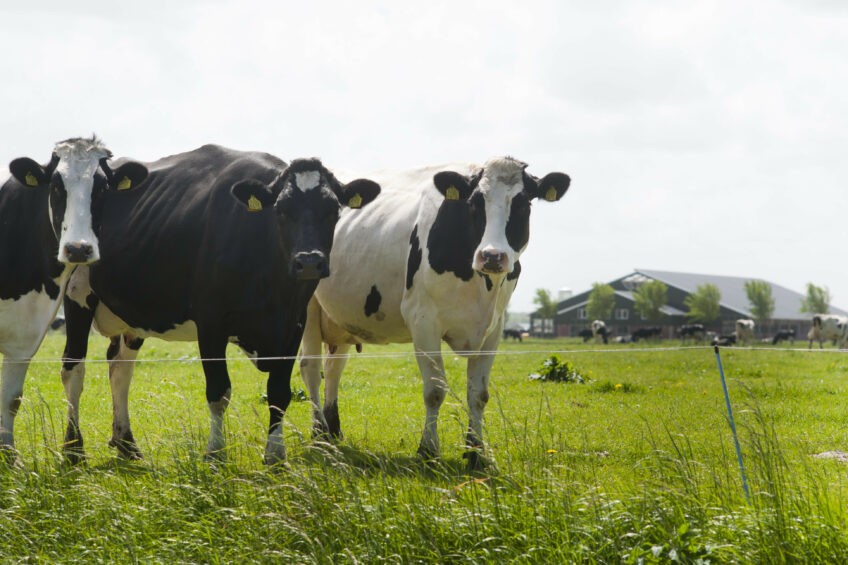
With the latest research showing that acidosis can be an issue throughout the grazing season, not just in spring, we spoke to AB Vista’s Dr Derek McIlmoyle to find out more.
Although the increased risk of acidosis when cows are grazing lush spring grass is widely recognised, the fact this risk can continue throughout the grazing season is less well known. According to Dr Derek McIlmoyle, AB Vista’s EMEA Ruminant Technical Director, there’s now strong evidence to demonstrate that modern ryegrass swards pose a significant acidosis risk whenever cows are grazing. “The latest research shows it takes only a small meal of starchy concentrates to push cows over the limit when they’re grazing, and not just during spring,” he explains. “Most milk producers know the risk of sub-acute ruminal acidosis (SARA) rises as they feed more rapidly fermented concentrate. The risk is also much higher if there’s insufficient digestible and structural fibre in the ration, both of which are essential to maintaining optimum conditions in the rumen. “The challenge is that the 30 litres/cow daily yields targeted on most farms nowadays require high ration energy density levels that risk inducing SARA regardless of how well formulated the ration is. When that diet includes grazing, it’s much harder to maintain the necessary balance, even when grass fibre levels increase later in the season.”

Grazing research results
2 studies in particular have highlighted the potential extent of the problem. Analysis of 12 farms in Ireland covering 144 grazing cows supplemented with less than 2kg/day of concentrate (left on Figure 1) showed that 11% of cows were suffering from SARA, 42% were at high risk and only 47% had a rumen pH within the normal range (pH>5.8). A study of 100 grazing herds in Australia produced similar results (right on Figure 1). “That around half of the grazing cows assessed were either suffering from, or at high risk from, SARA is a major concern,” highlights Dr McIlmoyle. “And where levels of supplementary concentrate are higher than in the studies, the incidence and risk of SARA will potentially be much greater.”
Figure 1 – Incidence and risk of SARA in grazing cows. Left is Ireland, right is Australia.

A more detailed investigation carried out in Austria monitored daily rumen pH fluctuations in cows fed either grass only, or grass supplemented with 3kg of concentrate twice daily during milking. The cows receiving concentrate showed significantly lower average rumen pH and minimum rumen pH (Figure 2), plus a massive 347 minutes each day below pH 5.8 (compared to just 26 minutes in the grazing only cows) and 101 minutes below pH 5.5 (versus 3 minutes for the grazing only cows).
Figure 2 – Impact on rumen pH of supplementing grazing cows with concentrate.

Rumen fermentation efficiency
“Below pH 5.8, fibre digestion within the rumen starts to become impaired, and cows are generally considered to be suffering from SARA,” Dr McIlmoyle continues. “That means a reduced nutrient supply to the cow, lower feed intakes, falling milk and butterfat production, and an increase in the incidence of health problems, such as laminitis. “It’s therefore important to monitor cows for signs of SARA throughout the grazing season. Undigested grains and fibre in the manure, coupled with decreased butterfat levels, are indicative of poor fibre digestion due to increased rumen acidity, whilst mucin tags will also be visible in the manure in extremely acidotic conditions (left picture on Figure 3).” Where signs of SARA are found, or milk yields or quality fall unexpectedly, swift action is needed to both regain lost production, and to protect cow health and body condition, claims Dr McIlmoyle. “If possible, feed a higher proportion of the concentrates as part of the buffer ration, whilst swapping rolled cereals for slower releasing starch sources like maize meal and increasing the level of digestible and structural fibre,” he advises. “Limit in-parlour feeding to 2kg/cow/day and consider switching to a compound feed that’s high in digestible fibre. In addition, adding an efficient rumen conditioner or a metabolically active live yeast will also help stabilise pH, and can increase yields by up to 2 litres/cow/day, regardless of whether signs of SARA are evident.”
Figure 3 – Abnormal manure is a key indicator of SARA. Left is undigested grains in manure. On the right you see mucin tags in the manure.
Optimising rumen function
However, it’s important to realise that rumen fermentation can be significantly compromised even before acidosis becomes noticeable. For example, maximum production of the volatile fatty acids (VFA), the source of around 70% of the cow’s energy supply, occurs when the rumen is kept above pH 5.8.
“This is why rumen buffering is so important when the acidosis risk factors are high, to both keep acidosis under control and improve feed efficiency,” continues Dr McIlmoyle. “However, it’s important to understand the differences between the various options available, with traditional sodium bicarbonate buffers acting very differently to the latest specialist slow-release rumen conditioners. Both are capable of reducing the extent, rate and duration of rumen pH drop, but a slow-release buffer is more effective in minimising the amount of time the rumen spends below pH 5.8. There also appears to be significant disadvantages to the way in which sodium bicarbonate exerts its effect on rumen pH.” In a recent trial carried out at University College Dublin (UCD), early lactation cows fed a typical European diet containing sodium bicarbonate consumed on average 1kg/day more dry matter (DM) than those cows fed a calcareous marine algae slow-release rumen conditioner (Table 1). Yet despite this lower intake, because of the more effective rumen buffering and improved fibre digestion when the conditioner was fed, there was a numerical increase in energy-corrected milk (ECM)(+1.79 kg/cow) and a significant rise in total milk solids production (+0.1 kg/cow) compared to the sodium bicarbonate group.
Focus on feed efficiency
“The efficiency of the cows on the diet containing the rumen conditioner was clearly ahead of those on either the sodium bicarbonate ration or the control,” Dr McIlmoyle explains. “It appears that sodium bicarbonate, although effective in maintaining rumen pH and reducing the risk of acidosis, also has a negative impact on rumen fermentation efficiency.” It is been suggested that the mechanism by which sodium bicarbonate lowers acidosis risk involves increasing the rate of passage through the rumen, simply reducing the availability of ration ingredients for fermentation. Although the result is generally an improvement in production compared to an untreated diet, the extra milk output achieved is less than would be expected from the additional volume of feed consumed. “The problem of acidosis might be avoided, but there’s a significant drop in feed conversion efficiency,” Dr McIlmoyle states. “And that’s not something most milk producers can afford, particularly with the current pressure on milk prices. “So put the focus on feed efficiency to maximise the return from all feeds, rather than just aiming to avoiding problems like acidosis, using a slow-release rumen conditioner to optimise rumen fermentation, increase milk from forage and maximise margins throughout the whole year.”
Join 13,000+ subscribers
Subscribe to our newsletter to stay updated about all the need-to-know content in the dairy sector, two times a week.




